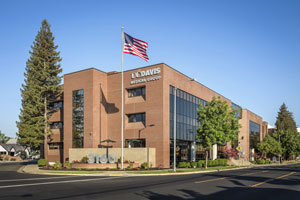Brain Tumors: What you need to know
Primary brain tumors originate in the brain or in it's associated coverings or nerves. The brain is the most complex structure in the human body, and is made up predominately of 2 broad categories of cells: neurons and glia. Neurons send and receive nerve messages. Glial cells (glia = glue) support the neurons by nourishing, protecting and supporting them. The nervous system consists of nerve cells - the cells that form the neural network that enables us to move, feel, see, hear, smell, taste and think - and supporting cells - the so called 'glial' cells which are comprised of astrocytes, oligodendrocytes, ependymal cells.
Primary brain tumors are classified according to the type of cell in the brain that the tumor cell most closely resembles. (There is some debate as to whether brain tumor cells come from normal brain cells or from stem cells in the brain.) Brain tumors are divided into glial tumors, called gliomas, and non-glial tumors. The most common type of glial tumor is the astrocytoma, which when it is highly malignant is referred to as a glioblastoma or GBM. Other glial tumor types include the oligodendroglioma and ependymoma. The most common non-glial tumor is the meningioma, which arises within the meninges, or covering, of the brain. Most meningiomas are benign and some may not even require treatment.
Brain tumors are also classified into four World Health Organization (WHO) grades based on their anticipated aggressiveness. Grade I and II are considered 'low grade', grade III and IV 'high grade'. The lower grade "benign" tumors are better named slow-growing. The terms "benign" and "malignant" can be misleading. Benign tumors can be located in areas important for neurologic function, which can lead to severe disability, vision loss, or even death. High grade or "malignant" tumors have a tendency to grow more rapidly and invade the surrounding brain, requiring multi-modality therapy (surgery, radiation and/or chemotherapy). Unlike other cancers, malignant brain tumors usually do not spread from the brain to other parts of the body. 'Low grade' tumors can change into a high grade tumor so follow-up with a brain tumor specialist on a regular basis is important.
Learn about:
- Specific Brain Tumors
- Less common gliomas
- Non-glial brain tumor
- Secondary (metastic) brain tumors?
- Common symptoms of brain tumors.
Ask a question:
- Specific types of brain tumors
- What are secondary (metastic) brain tumors?
- What are common symptoms of brain tumors?
- What are the common tests used to diagnose brain tumors?
- How are brain tumors treated?
- What is a craniotomy?
- Do you use neuronavigation or awake craniotomy?
- Do you use a minimally invasive approach?
- What are the possible risks and complications of brain surgery?
- What types of radiation are used to treat brain tumors?
- What are the risks and side effects of radiation?
- What is chemotherapy?
- What are the possible side effects of chemotherapy?
- What other medications are used to treat tumors?

